North Vietnam, Free Frank for Disabled Veterans, May 1st, 1958, Michel Nr. P1; Until April 30th, 1958 all military mail and war veteran mail was transported free of charge. A handwritten remark “TBS” or “MBF” along with the designation of the military unit was added to military letters and they were then simply introduced into the general mail stream. “TBS” is an abbreviation for “Soldier Letter”. Michel states that the letters received field post cancels and this was the case sometimes, but not in all cases, as the sample letter below demonstrates. This procedure of course invited abuse and as the number of military letters rose significantly after the end of the 1st Indochina War, the North Vietnamese Government decided to change the procedure. As of May 1st 1958, the military had to reimburse the General Post Office for all military mail (see also details in Ta Phi Long’s book “Soldier Mail During The Resistance Wars For National Salavation 1945-1975”). In order to allow for the proper accounting the Postal Administration started to distribute free franks without a nominal value to active military personell and veterans at a rate of six stamps per quarter. These free franks covered the domestic surface rate for a standard 20g letter and, according to UPU regulations they were not valid for international postage. Additional services (i.e. Air Mail or Registered Mail) had to be paid extra by using additional free franks or regular civilian stamps. Military letters that were directed to international destinations had to be up-franked by military officials with standard domestic stamps according to the international tariff in force at the time. Michel Nr. P1 is the first stamp in this series.
Here is a sample pre 1958 letter (full content preserved) from August of 1957 that was sent by Nguyen Ma of the central school for agricultural and forrest management in Hanoi (that was apparently attached to Military Unit MB18) to Nghiem Thi Nui in Nam Ding. Nam Dinh arrival cancel on the reverse. The envelope is a so called adversity cover that was handmade from a prior used notepad. Like all local letters from the 1950’s these letters are exceedingly rare. Most of them were destroyed in the multi-decadal war, the tropical climate or recycling due to raw material shortages. Be prepared to pay between $500-1,000 for a specimen depending on the time of mailing, military markings and the fact if there is a content or not.
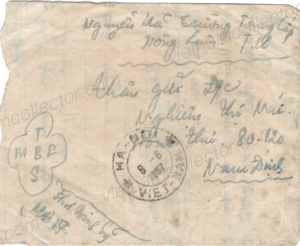

Here is the mint free frank. The base color for the emblem varies from orange red to red. This is the orange-red version.
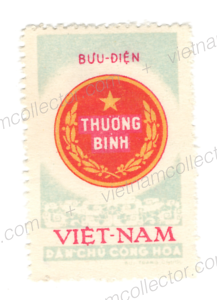
Mint free frank in a block of four.
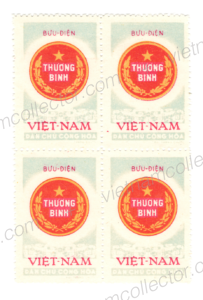
This stamp was sometimes susceptible to wet ink set-offs of the dominant red color caused by stacking freshly printed sheets on top of each other. Here is one of such a specimen.
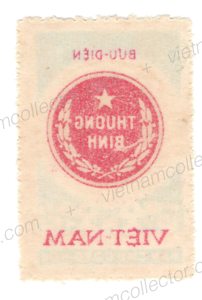
Postally used specimen with a red base color (rare). Note the broken “V” in “Vietnam” that is missing the top left line. This may be a plate error but has not been confirmed yet.
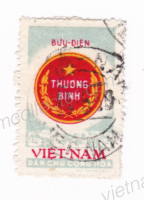
Detail scan of the affected area:
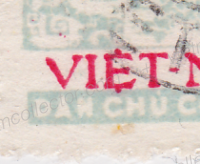
Rare First Day Cover of a block of four cancelled in Hanoi. Since the stamp was not available to the domestic general public First Day Covers with a block of four are very scarce (only two stamps were handed out deserving military personell and veterans).
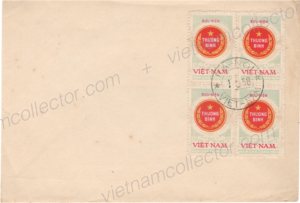
Very rare local letter, handmade from a Government form, mailed in July of 1958 from Nong-Cong by Dang Chuyen to the Minister of War Wounded in Hanoi. Nam Dinh transit and machine Hanoi arrival cancel on the reverse. Postally used letters of this stamp are very rare as most of them were destroyed in the multi-decadal war, the tropical climate or recycling due to raw material shortages.
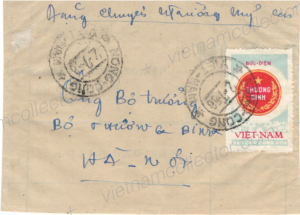
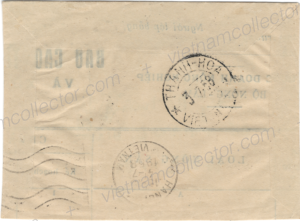
Very rare local letter sent from Phu Tho to the Ministry of War Damages in Hanoi on July 3rd. 1958. Hanoi machine arrival cancel on the reverse.
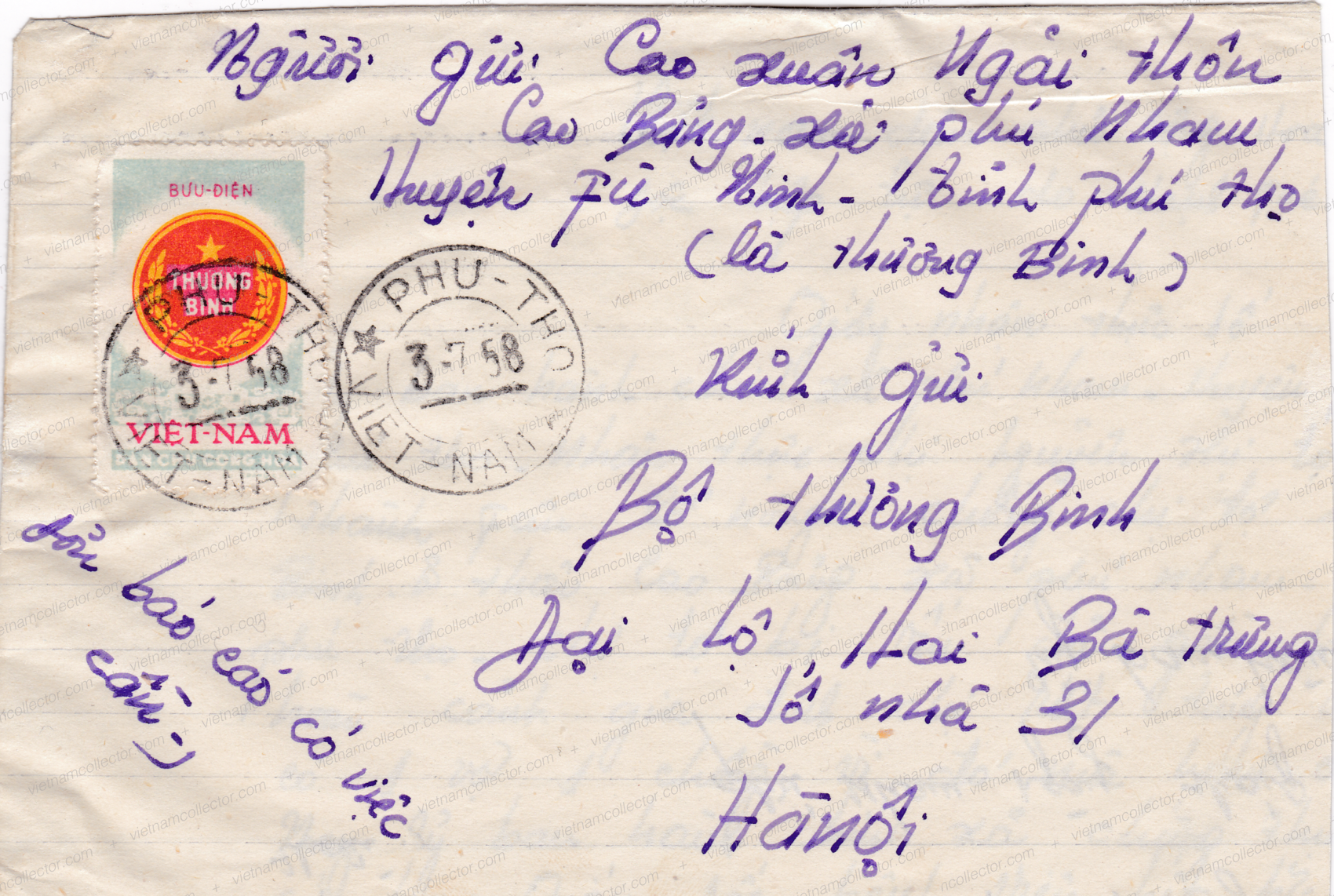
Very rare local letter of the second weight level (hence requiring two free franks) sent from Do-Luong on April 27th, 1959 to Hanoi. Nghe-An transit and Hanoi arrival cancel on the reverse.
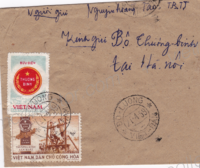
Very rare local registered letter sent to Trinh Xuan-Con, Council President of legislative affairs in July of 1958. The standard letter rate as of November 1st, 1957 amounted to 150D and the local registration rate to 200D. It appears that the second free frank and the 50D were added to cover this additional service. Very few complete letters with free franks that were sent by registered mail have survived.
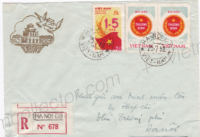
Registration Nr. 100081


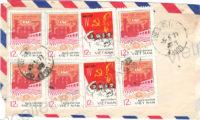
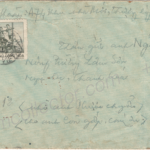
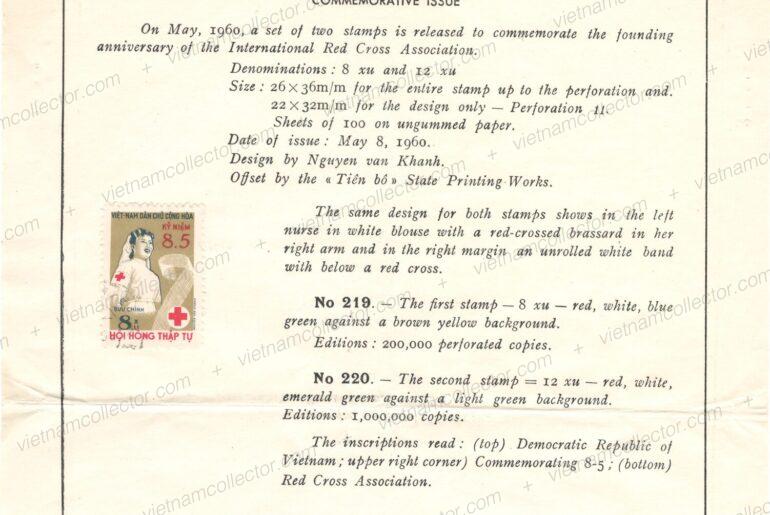
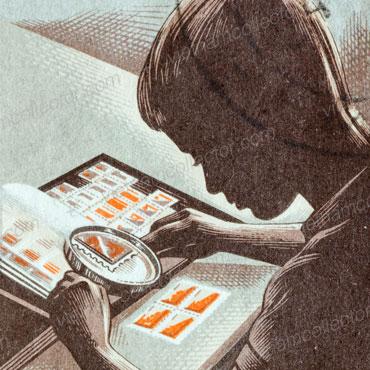
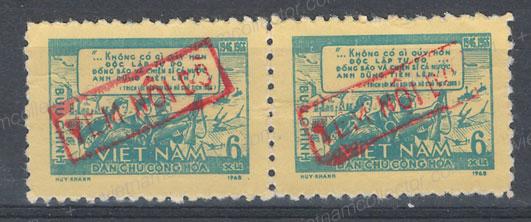
Comments are closed.